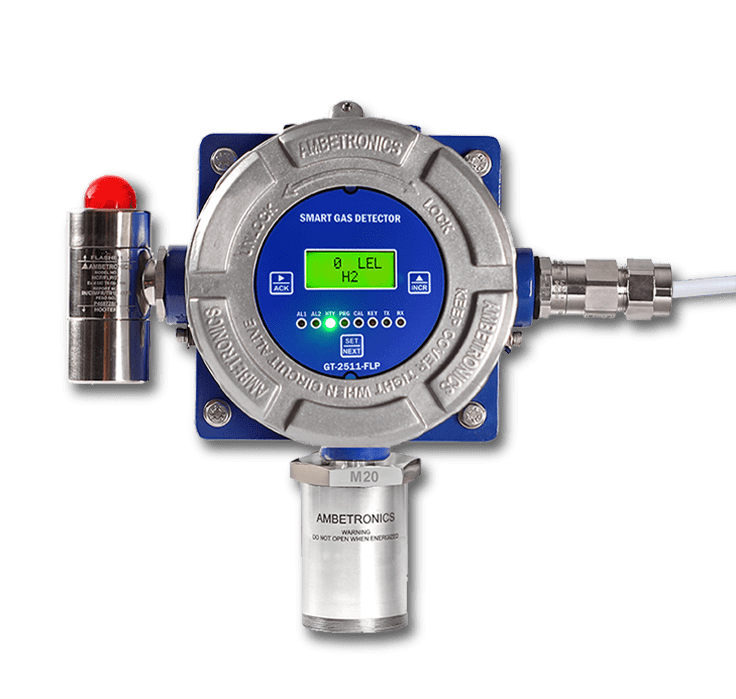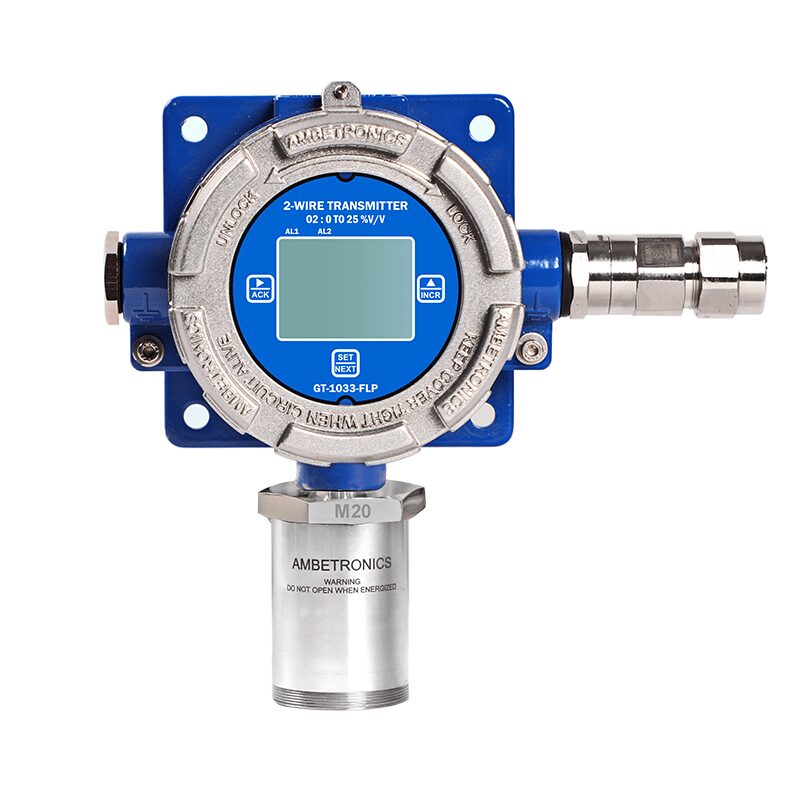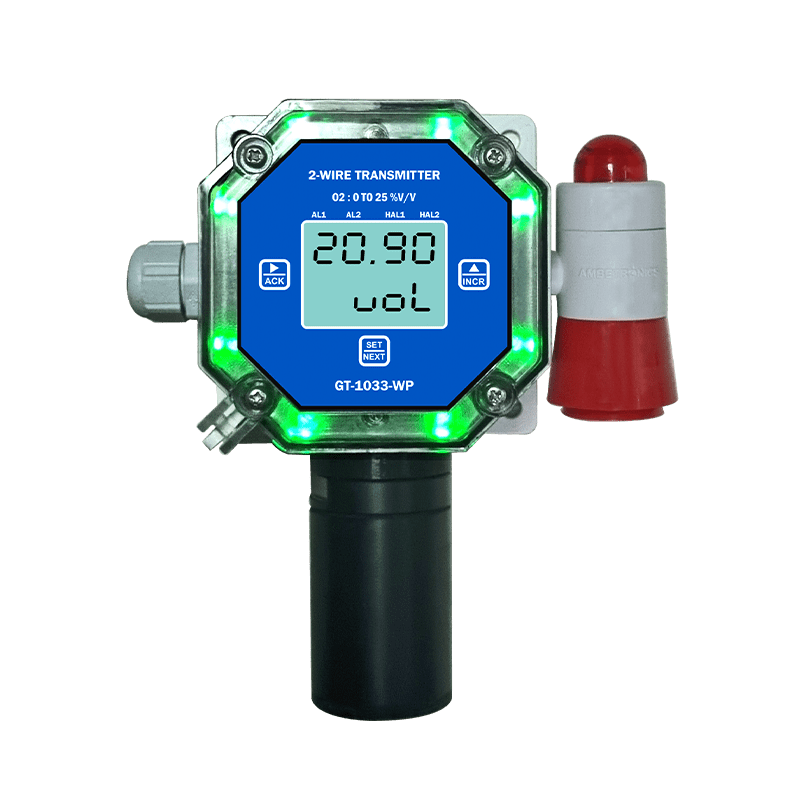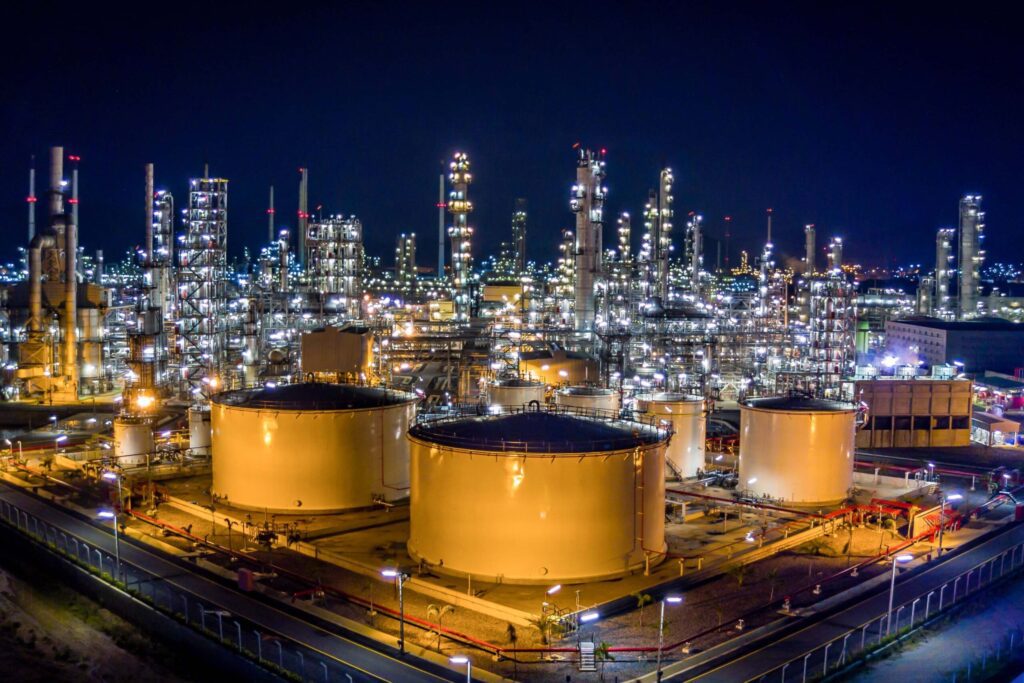CO Gas Detectors in Industries - Ambetronics CO Gas Detection
Carbon Monoxide (CO) is one of the critical aspects of gas detection and monitoring in industrial settings. This article explores the significance of CO Gas Detectors in industries, focusing on their features, applications, and compliance standards.
Ambetronics Carbon Monoxide Gas Detectors

GT-2511-FLP
Smart Gas Detector L.E.D Display

GT-2500-FLP
Smart Gas Detector LCD Display

GT-1033-FLP
2 Wire Loop Powered Transmitter

GT-2511-WP
Smart Gas Detector L.E.D Display

GT-2500-WP
Smart Gas Detector LCD Display

GT-1033-WP
2 Wire Loop Powered Transmitter
Safeguarding Lives, Securing Spaces: CO Gas Detectors in Industries
Our Standard Certifications





Flameproof Enclosure
Detailing the flameproof enclosure’s approval and compliance, ensuring safety in hazardous environments.Compliance to Standards
Highlighting the adherence to standards like IS/IEC 60079-1, IS/IEC 60079-31, and IS/IEC 60079-11, underscoring the commitment to safety.
What is the main role of CO Gas Detectors?
The main role of a CO Gas Detector is to ensure the safety and well-being of individuals and industrial environments by actively monitoring and detecting the presence of Carbon Monoxide (CO) gas. Carbon Monoxide is a colorless, odorless, and highly toxic gas that can pose serious health risks, making its detection crucial for preventing potential harm. The CO Gas Detector operates by continuously analyzing the surrounding air, providing rapid and accurate alerts in the event of even the slightest CO leak. By serving as an early warning system, these detectors enable prompt response measures, such as ventilation or evacuation, ultimately mitigating the risk of exposure to harmful concentrations of Carbon Monoxide. In industrial settings, where CO may be generated as a byproduct of various processes, the detector plays a pivotal role in maintaining a safe working environment and preventing accidents related to gas leaks.

Safeguarding Lives, Securing Spaces: CO Gas Detectors in Industries
Technical Specifications:
- Multi-Gas Detection: Detects Oxygen, Toxic, Combustible, and VOC gases.
- Smart Sensor Module: Pluggable modules for various sensors (Oxygen, Toxic, Combustible, PID & NDIR).
- Calibration and Maintenance: Calibration data, alarm data, offset data, and output current data are saved in the sensor module for easy maintenance.
- Wide Detection Range: Capable of detecting down to PPM, %V/V, %LEL, mg/m3.
- User-Friendly Display: 2-Line, 4-Digit 8 mm (H) Seven Segment LED Display & 8 LEDs for clear status indication.
- Alarming System: Indicates ‘Sensor Open,’ ‘Over Range,’ ‘Sensor Replace,’ ‘Cal Due,’ ‘Cal Fail,’ mA Loop Open.
- Output Options: Standard 4-20mA signal output with configurable range, optional RS-485 Communication Port with MODBUS RTU PROTOCOL.
- Compliance: Flameproof enclosure with Ex db IIC T6 Gb IP66, CIMFR and PESO certificates.
General Specification of CO Gas Detector
- Supply Voltage: 18 to 36 VDC, Typically 24VDC.
- Power Consumption: Less than 3.6 Watts.
- Response Time: Less than 15 seconds.
- Operating Temperature: -15 to +55°C, Storage: -10 to 60°C.
- Humidity: Less than 95% Non-Condensing.
- Accuracy: ±2% of Full Scale for Electrochemical and Catalytic sensors.
Sensor Technologies
- Electrochemical: ±2% F.S accuracy.
- Catalytic/Pellistor: ±2% F.S accuracy.
- NDIR-CH4/CO2/C3H8: ±10% of Applied Gas accuracy.
Combustible Gases Also Detected (%LEL)
Acetone, Acetylene, Ammonia, Butane, Ethanol, Ethylene, Hydrogen, Isopropanol, Methane, Methanol, N-Heptane, Pentane, Propane, Toluene, Unleaded Petrol, CNG/LNG/LPG/Natural Gas.
Toxic Gases Detected (PPM)
Ammonia, Bromine, Carbon Monoxide, Chlorine, Ethylene Oxide, Hydrogen, Hydrogen Bromide, Hydrogen Chloride, Hydrogen Cyanide, Hydrogen Fluoride, Methane, Methyl Ethyl Ketone, Nitrogen Dioxide, Nitric Oxide, Phosphine, Sulfur Dioxide.
VOC Gases Detected (PPM)
Isobutylene (SPAN C4H8), other VOCs.
Safeguarding Lives, Securing Spaces: CO Gas Detectors in Industries
User-Friendly Features:
Non-Intrusive Programming
Exploring user-friendly programming features, including non-intrusive programming using a magnetic wand and password protection.
Alarm Acknowledgement
Understanding the convenience of alarm acknowledgement from both front and rear terminals.
Applications Across Industries
Varied Industrial Implementations
Delving into specific industrial scenarios where CO Gas Detectors prove crucial, from stack monitoring to offshore drilling platforms.
Use in Confined Spaces
Highlighting the significance of CO Gas Detectors in confined spaces, ensuring safety in challenging environments.
Safeguarding Lives, Securing Spaces: CO Gas Detectors in Industries
FAQs
How often should CO Gas Detectors be calibrated?
Regular calibration is essential, typically recommended every six months, but frequency may vary based on usage and industry standards.
Can CO Gas Detectors be used in outdoor settings?
Yes, many CO Gas Detectors are designed to withstand outdoor conditions, providing reliable monitoring in various environments.
What is the significance of optional accessories like hooters and flashers?
Optional accessories enhance the functionality of CO Gas Detectors, providing additional alerts and ensuring a quick response in case of gas detection.
Are CO Gas Detectors suitable for small-scale industries?
Absolutely, CO Gas Detectors come in various models, making them suitable for both large-scale industrial complexes and smaller setups.
How can I access advanced features like RS-485 communication?
Advanced features can be accessed through non-intrusive programming using a magnetic wand, providing ease of customization.
